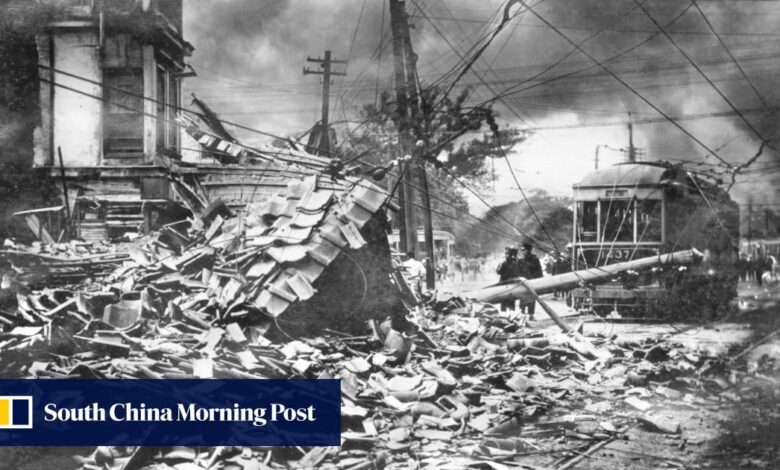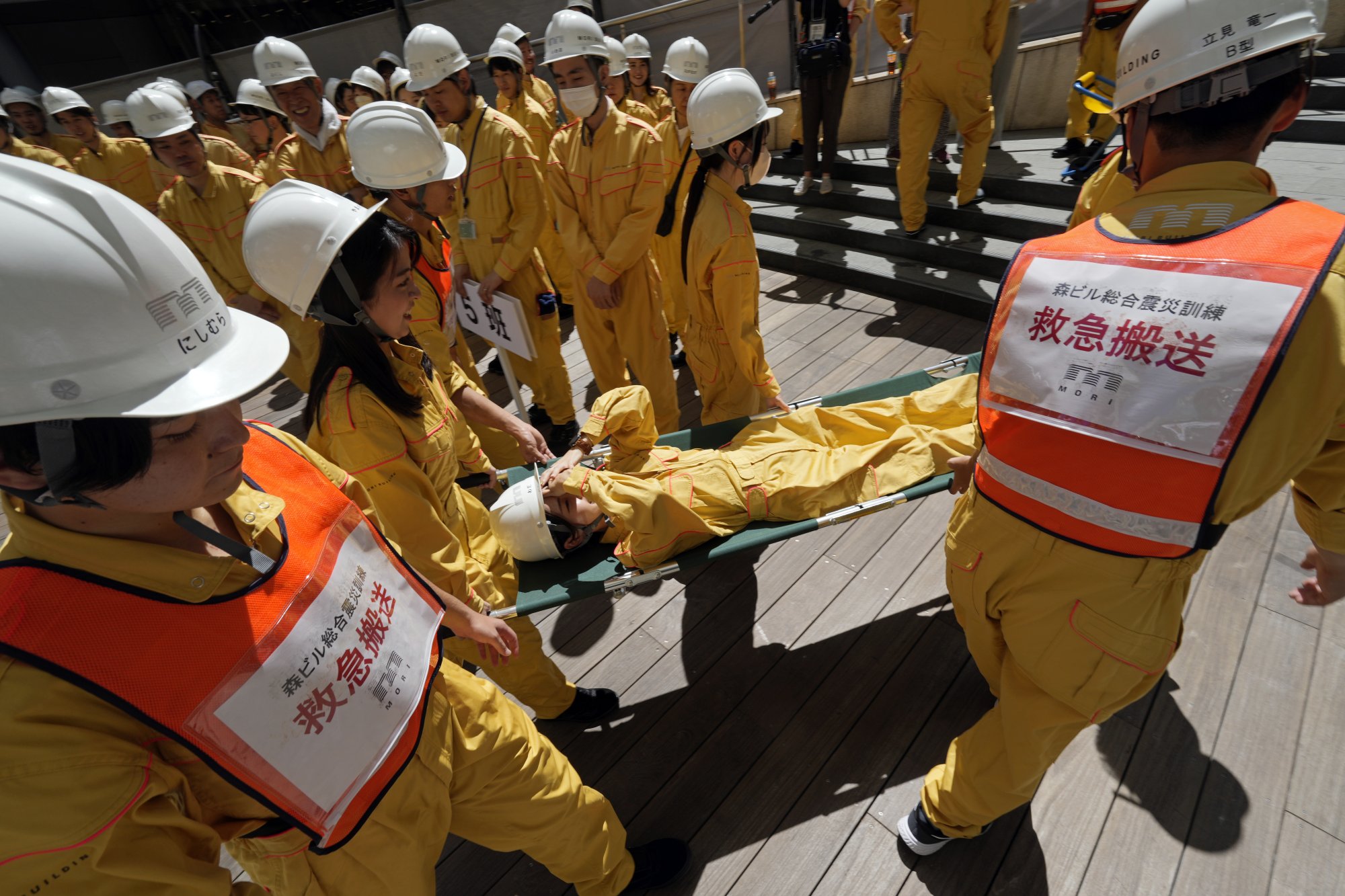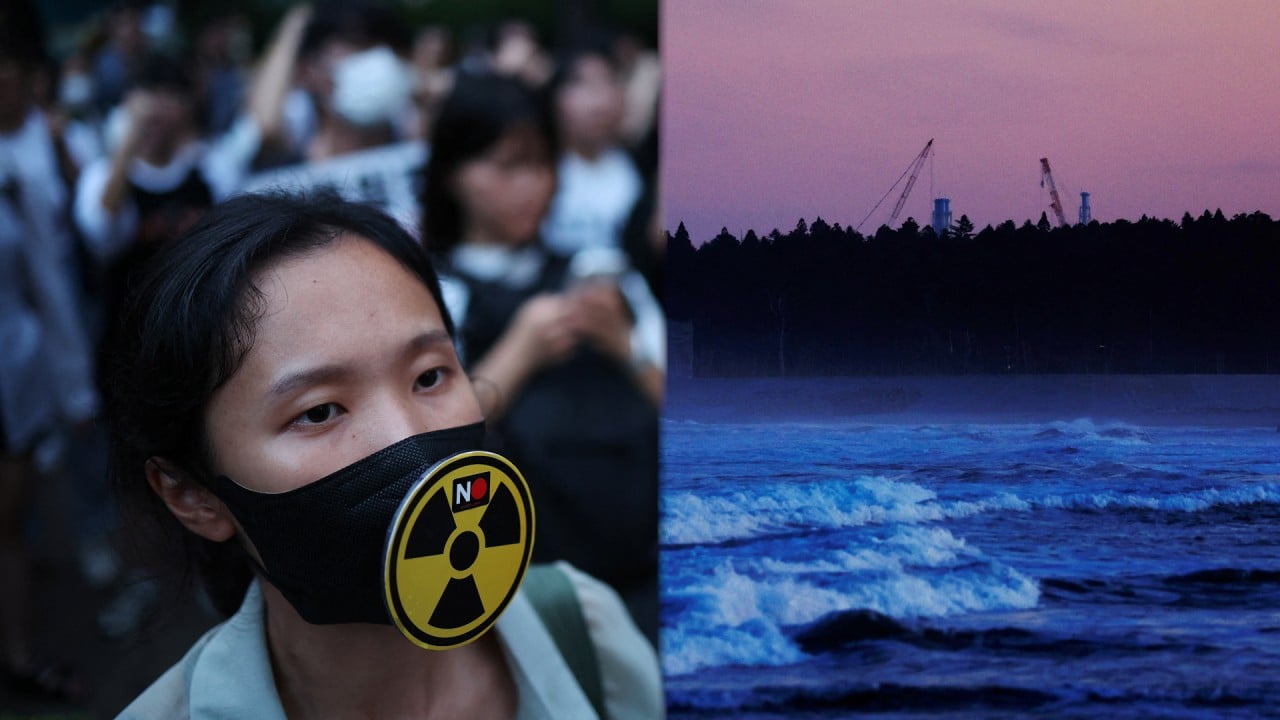Japan marks 100 years since Great Kanto Quake with disaster drills nationwide

[ad_1]
The 7.9-magnitude earthquake that struck the Sagamihara area, southwest of Tokyo, on September 1, 1923, just before noon, triggered a widespread inferno, causing most of the victims to perish in the fire.
In the aftermath, thousands of ethnic Koreans were killed as police and others responded to baseless rumours that Koreans were poisoning wells. The rampage has never fully been acknowledged by the government.
Japanese officials are worried another devastating earthquake could happen again. On Friday, the drill simulated the aftermath of a fictional 7.3-magnitude trembler in central Tokyo at 7am.

Kishida and his cabinet ministers, wearing matching light-blue uniforms, walked to the prime minister’s office for an emergency response meeting to discuss initial measures with hypothetically hard-hit Sagamihara city, the 1923 epicentre.
Japan, which sits on the so-called Pacific “Ring of Fire”, is one of the most quake-prone countries in the world.
On Friday, earthquake drills were being conducted around the country. At primary schools, children squatted under desks to protect their heads from falling objects.
Kishida was to participate in a joint earthquake drill hosted by Sagamihara and joined by eight cities including Tokyo.
Chief Cabinet Secretary Hirokazu Matsuno told reporters that September 1 this year is more than the centennial of the Great Kanto Quake – it serves as a lesson about building structures with more resilience to earthquakes and fire.
The memories of the Great Kanto Quake will not be allowed to “weather away” and we will “do our utmost” to take comprehensive measures as the country braces for another big quake in Tokyo and elsewhere, Matsuno said.

The devastating 1923 earthquake came 13 years after Japan’s colonial rule of the Korean peninsula began. Many Koreans, Chinese and Japanese mistaken as Korean, as well as Japanese communists, labour activists and anarchists, were killed by police and paramilitary.
There is no official number but historians say as many as around 6,000 of them were murdered.
At a memorial service held by Korean residents and human rights groups at a monument dedicated to the massacre victims, attendants observed a moment of silence with the sound of a bell at 11:58am, the time the 1923 quake struck.
Holiday in Fukushima? From dark tourism to ‘hope tourism’ 12 years on
Holiday in Fukushima? From dark tourism to ‘hope tourism’ 12 years on
Past Tokyo governors used to send a message of condolence to the ceremony, but that tradition ended in 2017, a year after governor Yuriko Koike took office.
Koike, who attended a drill elsewhere in Tokyo, did not show up at an official annual memorial for quake victims at a hall in the hard-hit Sumida region of downtown Tokyo.
She offered condolences to all victims of the quake in a message read by her aide.
[ad_2]
Source link






